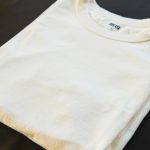When you consider fabric choices, Supima cotton stands out as an option that combines luxury with sustainability. It's not just another type of cotton; it's in the top 1% globally, known for its remarkable qualities like softness and durability. Grown in the U.S. with eco-friendly practices, it represents a thoughtful choice for the environmentally conscious consumer. But what exactly makes it different from conventional cotton, and how do those differences impact your wardrobe? Exploring this can reveal more about the benefits that Supima cotton brings to both your style and the planet.
Table of Contents
What Is Supima Cotton?
Supima cotton is a premium cotton variety known for its exceptional softness, strength, and vibrant color retention. It's actually a trademarked name, representing the top 1% of the world's cotton. You'll find that Supima cotton is grown exclusively in the United States, primarily in California, Arizona, Texas, and New Mexico. The unique climate and rich soil in these regions contribute to its superior quality.
This cotton type is derived from the Pima cotton plant, which is known for its long fibers. These long fibers result in a smoother fabric that resists fraying, fading, and tearing. When you choose Supima cotton, you're opting for a fabric that not only feels luxurious against your skin but also stands the test of time.
Supima cotton is often blended with other materials to enhance durability and texture, making it popular in various textiles, including bed linens, towels, and clothing. As you explore the world of fabrics, keep in mind that Supima cotton represents a commitment to quality and sustainability, making it an excellent choice for those who value both comfort and environmental responsibility.
Benefits of Supima Cotton
Choosing Supima cotton comes with a range of benefits that enhance both comfort and durability in your everyday textiles. This premium cotton is known for its long fibers, which contribute to its remarkable softness and strength. You'll find that garments made from Supima cotton feel luxurious against your skin and resist wear and tear over time.
Here are some key benefits of choosing Supima cotton:
| Benefit | Description |
|---|---|
| Softness | Supima cotton is incredibly soft and smooth, enhancing comfort. |
| Durability | Its long fibers make it more durable than regular cotton, lasting longer. |
| Color Retention | Supima cotton holds dye exceptionally well, ensuring vibrant colors. |
| Breathability | This fabric is breathable, making it ideal for all-day wear in any season. |
Sustainable Farming Practices
When you choose Supima cotton, you're supporting sustainable farming practices that prioritize the environment.
Organic growing techniques eliminate harmful chemicals, while innovative water conservation methods ensure minimal waste.
Together, these approaches create a more sustainable future for cotton production.
Organic Growing Techniques
Many farmers are now adopting organic growing techniques that prioritize sustainability and enhance the quality of Supima cotton. These methods focus on cultivating cotton without synthetic pesticides or fertilizers, which not only benefits the environment but also contributes to healthier soil.
By using crop rotation and intercropping, you can improve biodiversity and reduce pest populations naturally. You might also consider incorporating organic compost and natural fertilizers to nourish your crops. This not only provides essential nutrients but also promotes soil health, allowing your Supima cotton to thrive.
Organic farmers often rely on beneficial insects and organic sprays to manage pests, creating a balanced ecosystem that supports plant growth. Additionally, organic growing techniques emphasize the importance of sustainable practices throughout the supply chain.
By supporting local farmers who use these methods, you're helping to reduce carbon footprints and promote fair trade practices. Investing in organic Supima cotton means you're choosing a fabric that's not only luxurious but also produced in a way that respects the planet.
In adopting these techniques, you're contributing to a sustainable future for the cotton industry while enjoying the superior quality of organic Supima cotton.
Water Conservation Methods
Implementing effective water conservation methods in Supima cotton farming not only enhances sustainability but also ensures healthier crops and a reduced environmental impact.
You can start by utilizing drip irrigation systems, which deliver water directly to the plant roots, minimizing evaporation and runoff. This targeted approach conserves water and promotes optimal growth.
Another strategy is soil moisture monitoring. By regularly checking moisture levels, you can determine when to irrigate, reducing unnecessary water usage.
Crop rotation and cover cropping also play a vital role. These practices improve soil health and reduce water consumption by enhancing the soil's ability to retain moisture.
Consider rainwater harvesting too; it captures and stores rainwater for irrigation. This not only conserves groundwater but also reduces reliance on municipal water sources.
Lastly, you should educate fellow farmers on sustainable practices and share successful methods, fostering a community of water-conscious growers.
Comparing Supima to Conventional Cotton
When you compare Supima cotton to conventional cotton, you'll notice some key differences in fiber quality, environmental impact, and durability.
Supima cotton's superior strength and softness can enhance your wardrobe while also being gentler on the planet.
Understanding these distinctions can help you make more informed choices about your fabric purchases.
Fiber Quality Differences
Supima cotton stands out for its superior fiber quality, offering a softness and durability that conventional cotton simply can't match. When you touch Supima, you'll immediately notice its luxurious feel. This softness comes from longer fibers that resist fraying and fading, ensuring your garments maintain their look and feel over time. Conventional cotton, with its shorter fibers, tends to pill and lose its shape, leading to a less satisfying experience.
In terms of strength, Supima cotton is significantly stronger than its conventional counterpart. This means your clothing can withstand wear and tear, making it a great investment for your wardrobe. You'll find that Supima fabrics are less likely to sag or stretch out, allowing you to enjoy your favorite pieces longer.
Additionally, Supima's breathability enhances comfort, making it an ideal choice for various climates. You'll feel cooler in warm weather and warmer in cool conditions, thanks to its natural moisture-wicking properties.
When you choose Supima over conventional cotton, you're opting for quality that not only feels great but also stands the test of time.
Environmental Impact Comparison
The superior quality of Supima cotton also comes with a significant environmental advantage over conventional cotton, making it a more sustainable fabric choice. When you choose Supima, you're opting for a product that uses about 50% less water during cultivation compared to regular cotton. This reduction is crucial, especially in water-scarce regions, where every drop counts.
Moreover, Supima cotton is grown under strict guidelines that prioritize sustainable farming practices. This means fewer harmful pesticides and chemicals are used, resulting in healthier soil and ecosystems. In contrast, conventional cotton farming often relies heavily on these substances, which can degrade the environment and harm local wildlife.
You'll also appreciate that Supima cotton's longer fibers result in less fabric waste during production. This efficiency not only conserves resources but also reduces the overall environmental footprint of textile manufacturing.
Durability and Longevity
You'll find that Supima cotton outlasts conventional cotton, offering enhanced durability and longevity for your wardrobe. This premium cotton is made from longer fibers, which results in a stronger fabric that resists fraying, fading, and wear over time. When you choose Supima, you're investing in pieces that maintain their shape and color, even after multiple washes.
Conventional cotton, while comfortable, often wears down faster due to its shorter fibers. This can lead to pilling and a rough texture, making your clothes feel less appealing. You might notice that conventional cotton garments require more frequent replacements, costing you more in the long run.
With Supima, you can expect a luxurious feel coupled with resilience. It not only stands up to everyday use but also holds its beauty and softness, making it perfect for everything from casual wear to high-end garments. Plus, the improved durability means you'll spend less time worrying about replacing worn-out items.
In short, when you opt for Supima cotton, you're choosing a sustainable option that promotes longevity, ensuring your wardrobe stays fresh and stylish for years to come.
Care and Maintenance Tips
To keep your Supima cotton items looking their best, wash them in cold water and hang them up to dry whenever possible. This gentle approach helps preserve the fabric's natural softness and vibrant colors. Avoid using bleach or fabric softeners, as these can damage the fibers and diminish their luxurious feel.
Instead, follow these care tips to maintain your Supima cotton:
- Use a mild detergent: Opt for a gentle detergent that's free from harsh chemicals.
- Wash inside out: Turn your items inside out to protect their outer surface from friction during washing.
- Avoid high heat: If you must use a dryer, select a low heat setting to prevent shrinkage.
- Iron with care: If you need to iron, do so while the fabric is slightly damp, and use a low heat setting.
Supima Cotton in Fashion Industry
Supima cotton has become a favored choice among designers for its luxurious feel and exceptional quality, elevating garments in the fashion industry. When you wear clothing made from Supima cotton, you can immediately notice the difference. It's softer and more durable than traditional cotton, making it ideal for everything from high-end fashion to everyday essentials.
Fashion brands are increasingly turning to Supima cotton not just for its comfort but also for its sustainability. As consumers become more eco-conscious, you'll find that many designers prioritize sustainable materials. Supima cotton, being grown in the U.S. under strict agricultural practices, ensures a lower environmental impact compared to other cotton sources.
Additionally, the fabric holds dye exceptionally well, allowing for vibrant colors and patterns that last wash after wash. This means your investment in Supima cotton pieces will pay off in both style and longevity.
Frequently Asked Questions
Is Supima Cotton Hypoallergenic for Sensitive Skin?
Yes, Supima cotton is hypoallergenic, making it a great choice for sensitive skin. Its natural fibers reduce irritation and allergies, so you can enjoy soft, breathable fabric without worrying about discomfort or skin reactions.
Where Can I Find Supima Cotton Products?
You can find Supima cotton products at various retailers, both online and in stores. Check websites like Amazon, Target, or specialty fabric shops. Local boutiques might also carry high-quality Supima cotton items. Happy shopping!
How Does Supima Cotton Differ in Price From Regular Cotton?
Supima cotton typically costs more than regular cotton due to its superior quality, longer fibers, and limited production. You'll find that its softness and durability justify the price difference when shopping for fabric.
Can Supima Cotton Be Recycled or Composted?
Yes, you can recycle Supima cotton, but it's best to check local guidelines. It's not typically composted due to its processing, but it can break down naturally over time in the right conditions.
What Certifications Should I Look for When Buying Supima Cotton?
When buying Supima cotton, look for certifications like the Supima Association seal, Oeko-Tex Standard 100, and Global Organic Textile Standard (GOTS). These ensure quality, sustainability, and that the fabric meets environmental and safety standards.
- Tetron Fabric for Marine Applications: Durability and Use Cases - June 18, 2025
- Tetron Fabric for Outdoor Furniture: Weather Resistance and Care - June 18, 2025
- Tetron Fabric for Wall Coverings: Style and Application Tips - June 18, 2025







